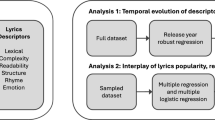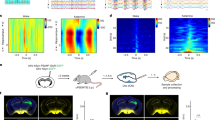Abstract
THE neuromuscular activities of the Anthozoa have been studied extensively as examples of the working of the ‘elementary nervous system’1,2. Most of the information in this field comes from the sea anemones, the order Actinaria, sessile animals which exhibit basic patterns of slow periodic activity together with certain quick protective responses. The latter are facilitated responses in which single electrical stimuli are ineffective; responses occur only to the second and subsequent stimuli of a series within a limited frequency-range3.
This is a preview of subscription content, access via your institution
Access options
Subscribe to this journal
Receive 51 print issues and online access
$199.00 per year
only $3.90 per issue
Buy this article
- Purchase on Springer Link
- Instant access to full article PDF
Prices may be subject to local taxes which are calculated during checkout
Similar content being viewed by others
References
Parker, G. H., “The Elementary Nervous System” (J. B. Lippincott, Philadelphia, 1919).
Pantin, C. F. A., Proc. Roy. Soc. B, 140, 147 (1952).
Pantin, C. F. A., J. Exp. Biol., 12, 119 (1935).
Torelli, B., Pubbl. Staz. Zool. Napoli, 12, 1 (1932).
Author information
Authors and Affiliations
Rights and permissions
About this article
Cite this article
ROSS, D. Responses of Cerianthus to Stimulation. Nature 180, 1368–1369 (1957). https://doi.org/10.1038/1801368b0
Issue Date:
DOI: https://doi.org/10.1038/1801368b0
Comments
By submitting a comment you agree to abide by our Terms and Community Guidelines. If you find something abusive or that does not comply with our terms or guidelines please flag it as inappropriate.



